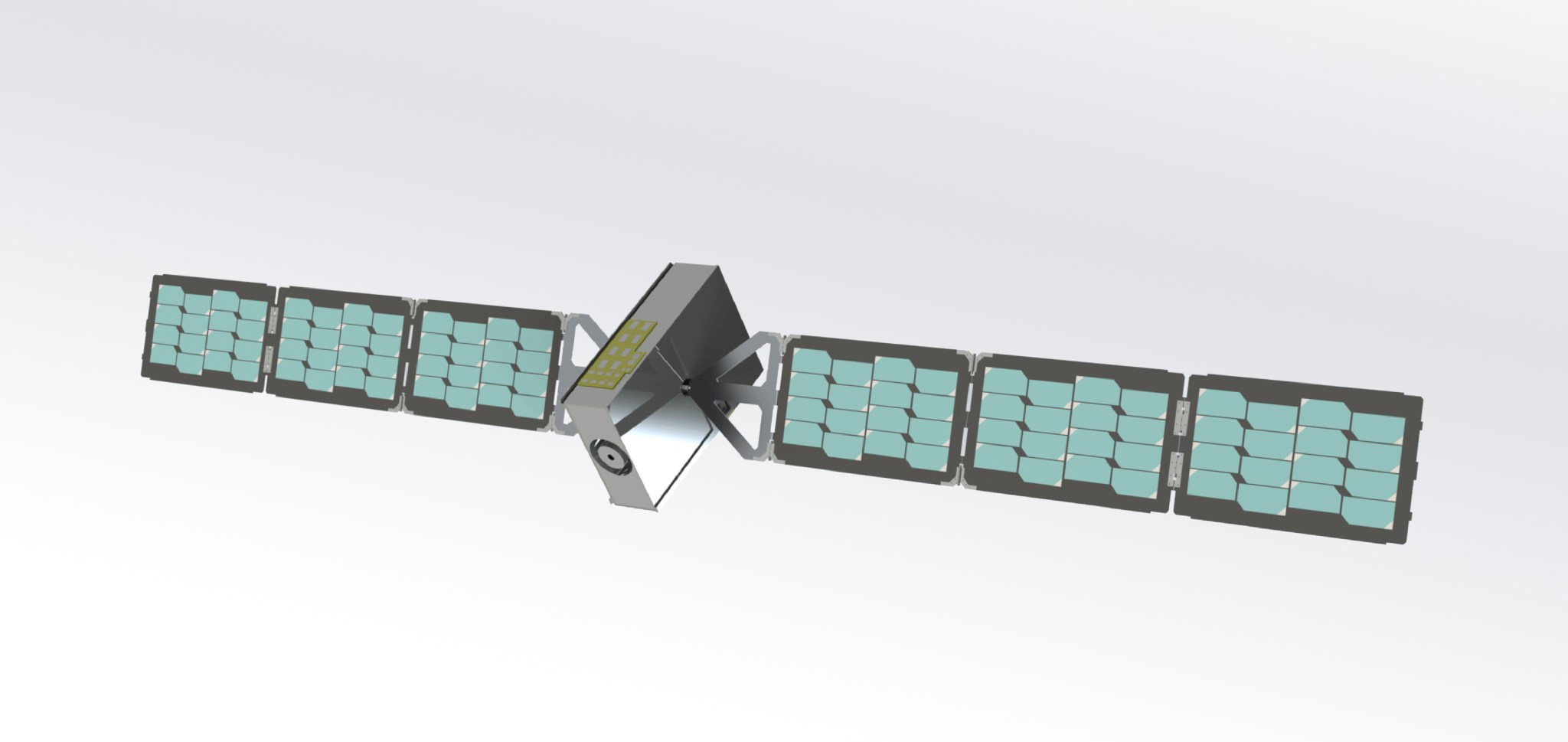Ragnarok Industries is busily working on its Cube Quest Challenge entry, a 6U smallsat named Heimdallr. The spacecraft will feature electric propulsion to reach lunar orbit, explains Luigi Balarinni, chief executive officer and co-founder of the firm.
A big plus in their design and building of Heimdallr is partnering with a diversity of space industry companies, furthering their objective of advancing CubeSat applications in the near future.
Heimdallr features automated command and control software to reduce the human resources required for mission operations of the craft. This includes automated download of telemetry data, secure uploading of commands, and various flight plans dependent on the mission.
Radiation protection
“It’s an exciting time,” Balarinni said, having formed the company at the start of 2015 to answer the call of NASA’s Cube Quest Challenge. Heimdallr features a set of gimbaled deployable solar panels to maximize available spacecraft energy. That power level allows for use of electric ion propulsion onboard the small CubeSat.
Heimdallr is a three-axis stabilized CubeSat featuring cold gas propulsion for momentum dumping.
However, there is one essential factor that’s been taken on by the group: radiation protection of key spacecraft elements. “You don’t have the protection from low-Earth orbit, therefore you have to ensure the proper shielding,” Balarinni points out, be it from radiation, single event upsets and other destructive effects. “It is hard work and definitely exciting. There is no lack of motivation here,” he said.
Prize-winning attributes
Balarinni says he’s very pleased with the number of partnerships established with space-related groups to build the very-capable Heimdallr.
As blueprinted, the company’s Cube Quest entry is destined to spiral in toward the moon and then circularize itself into a lunar orbit. It would showcase several prize money-winning attributes – such as competing in the data packet challenge – but then will move out from lunar orbit.
“We want to park Heimdallr in a Moon-Earth L1 point, a halo orbit,” Balarinni said, a position in space useful to the Radio Amateur Satellite Corporation (AMSAT). “We’re working with AMSAT so they can bounce their messages off of our spacecraft … the biggest party ever.”
Additionally, Balarinni said that tucking Heimdallr into a moon-Earth L1 point “would go a long way to see how long spacecraft parts last … along with a great chance for the AMSAT radio community to be able to make contacts.”
Double-duty
Ragnarok Industries is engaged in double-duty. That is, designing a Cube Quest competitor and also attempting to commercialize spacecraft know-how afterwards.
“We have to be prepared for not being selected,” Balarinni said, “so we’re pursuing a commercial venture at the same time, taking advantage of our platform for possible retooling. So that is our own internal motivation.”
In terms of commercializing their knowledge beyond Cube Quest, Balarinni and his team are looking into Earth-based polar broadband markets, from in-flight internet, supporting Arctic and Antarctic stations, as well as the needs of maritime oil, gas, and mining industries.
“It’s a perfect size market for us. We have a platform and that’s what we’re starting to seek investment for in the months ahead,” he said.
Business model
Balarinni feels that these are exciting times with so many startup companies using CubeSats.
“There is this party going on in low-Earth orbit,” he said, “and it’s becoming fairly competitive to actually pick a niche and go for it. That’s why we have chosen to go beyond low-Earth orbit and use a higher orbit. To do that you need to have radiation-hardened parts, and that’s one aspect of our business model.”
The future of CubeSats is bright indeed, Balarinni said. “I feel in the years to come we’ll see interplanetary CubeSats and a new standard for landers that everyone can follow.”
One such target may well be Jupiter’s icy moon, Europa. To do that you would require a radiation-hardened CubeSat, Balarinni notes.
Today, a very healthy market exists for CubeSat components that work in low-Earth orbit, and also beyond. You have the chance to mass-produce CubeSat components to bring down the unit price and have high reliability, Balarinni said. “There’s something very beautiful about this moment.”
Giving back
Recently, Ragnarok has partnered with Emergent Space Technologies to offer mentors and materials to a group of aspiring, young satellite developers at Thomas Jefferson High School for Science and Technology in Northern Virginia. The educational mission gives students the opportunity to develop and fly a CubeSat mission. Their satellite, dubbed “TJ REVERB,” is on track to launch in late 2018. Commands will be uploaded from the high school classroom and data downloaded on subsequent passes using the amateur radio frequency band. Up to three radios will fly on the CubeSat to perform in-class experiments, led by high school instructor Michael Piccione.
More about Cube Quest
The Cube Quest competition offers a total of $5 million to teams that meet the challenge objectives of designing, building and delivering flight-qualified, small satellites capable of advanced operations near and beyond the moon. The competition is sponsored by NASA’s Space Technology Mission Directorate and managed by the Centennial Challenges Program at NASA’s Marshall Space Flight Center in Huntsville, Alabama.
For more information about the Cube Quest Challenge, visit:
https://www.nasa.gov/cubequest
For more information about Centennial Challenges, visit:
https://www.nasa.gov/directorates/spacetech/centennial_challenges/index.html



























